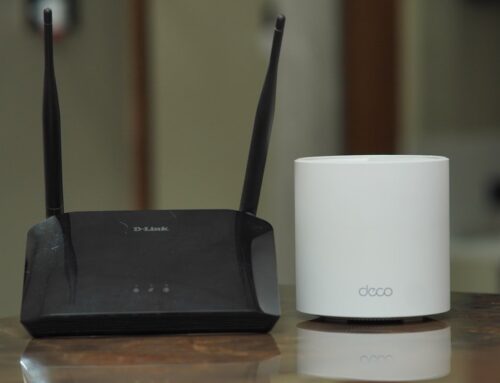
The Importance of Network Monitoring for Business Security
In an increasingly interconnected world, the importance of network monitoring cannot be overstated. As businesses rely more heavily on digital infrastructure, the need for robust network oversight has become paramount. Network monitoring involves the continuous observation of a computer network for any issues related to performance, security, and availability.
This proactive approach allows organizations to detect anomalies, troubleshoot problems, and ensure that their systems are functioning optimally. With the rise of cyber threats and the growing complexity of IT environments, effective network monitoring has evolved from a luxury to a necessity. The landscape of network monitoring has transformed significantly over the years.
Initially, it was primarily focused on tracking bandwidth usage and uptime. However, as cyber threats have become more sophisticated, the scope of network monitoring has expanded to include security measures, compliance checks, and real-time analytics. Modern network monitoring solutions leverage advanced technologies such as artificial intelligence and machine learning to provide deeper insights into network behavior.
This evolution reflects the critical role that network monitoring plays in safeguarding business assets and maintaining operational integrity.
Key Takeaways
- Network monitoring is essential for businesses to ensure the security and stability of their IT infrastructure.
- Threats to business security include malware, phishing attacks, data breaches, and insider threats.
- Network monitoring plays a crucial role in identifying and mitigating security threats in real-time.
- Benefits of network monitoring for business security include improved threat detection, faster incident response, and better compliance with regulations.
- Best practices for implementing network monitoring include defining clear objectives, selecting the right tools, and regularly reviewing and updating security policies.
Understanding the Threats to Business Security
Phishing Attacks and Ransomware
Cybercriminals employ tactics such as phishing attacks, which often involve deceptive emails that trick employees into revealing sensitive information or downloading malicious software. Ransomware attacks can paralyze an organization by encrypting its data and demanding payment for its release.
Insider Threats: A Unique Challenge
Employees with access to critical systems may inadvertently or maliciously compromise data integrity. Whether through negligence or intentional sabotage, insider threats can be particularly difficult to detect and mitigate.
The Rise of Remote Work and Expanded Attack Surface
The rise of remote work has expanded the attack surface for organizations, making it essential to monitor not just the internal network but also remote connections and devices. Understanding these multifaceted threats is crucial for businesses aiming to implement effective security measures.
The Role of Network Monitoring in Business Security
Network monitoring serves as a frontline defense against the myriad of threats that businesses face today. By continuously analyzing network traffic and user behavior, organizations can identify suspicious activities that may indicate a security breach. For example, an unusual spike in outbound traffic could signal data exfiltration attempts, while repeated failed login attempts might suggest a brute-force attack.
Network monitoring tools can alert IT teams in real-time, enabling them to respond swiftly to potential threats before they escalate into full-blown incidents. Furthermore, network monitoring plays a vital role in compliance with regulatory standards such as GDPR, HIPAA, and PCI DSS. These regulations mandate strict controls over data access and protection, requiring organizations to maintain detailed logs of network activity.
By implementing comprehensive monitoring solutions, businesses can ensure they meet these compliance requirements while also gaining valuable insights into their security posture. This dual benefit not only helps in avoiding hefty fines but also fosters trust among customers and stakeholders who expect their data to be handled securely.
Benefits of Network Monitoring for Business Security
| Benefits of Network Monitoring for Business Security |
|---|
| 1. Early detection of security threats |
| 2. Improved incident response time |
| 3. Enhanced visibility into network traffic |
| 4. Protection of sensitive data |
| 5. Compliance with industry regulations |
| 6. Reduction of security breaches and data loss |
| 7. Minimization of network downtime |
The advantages of network monitoring extend beyond mere threat detection; they encompass a wide range of operational benefits that enhance overall business security. One significant benefit is improved incident response times. With real-time alerts and detailed logs of network activity, IT teams can quickly pinpoint the source of a problem and take corrective action.
This rapid response capability minimizes downtime and reduces the potential impact of security incidents on business operations. Additionally, network monitoring facilitates better resource management. By analyzing traffic patterns and bandwidth usage, organizations can optimize their network infrastructure to ensure efficient performance.
This optimization not only enhances user experience but also helps in identifying underutilized resources that can be reallocated or decommissioned. Furthermore, comprehensive monitoring provides valuable data that can inform strategic decision-making regarding future investments in technology and security measures.
Best Practices for Implementing Network Monitoring
Implementing an effective network monitoring strategy requires careful planning and execution. One best practice is to establish clear objectives for what the organization aims to achieve through monitoring. This could include enhancing security posture, improving system performance, or ensuring compliance with regulations.
By defining specific goals, businesses can tailor their monitoring efforts to align with their unique needs. Another critical aspect is ensuring that the monitoring tools are configured correctly to capture relevant data without overwhelming IT teams with false positives. Fine-tuning alert thresholds and establishing baselines for normal network behavior can help in distinguishing between benign anomalies and genuine threats.
Regularly reviewing and updating these configurations is essential as network environments evolve over time. Additionally, training staff on how to interpret monitoring data and respond effectively is vital for maximizing the benefits of network monitoring.
Choosing the Right Network Monitoring Tools
Selecting the appropriate network monitoring tools is crucial for achieving effective oversight of an organization’s digital infrastructure. The market offers a plethora of options, each with its own set of features and capabilities. When evaluating tools, businesses should consider factors such as scalability, ease of use, integration capabilities with existing systems, and the level of support provided by vendors.
For instance, some organizations may benefit from all-in-one solutions that offer comprehensive monitoring across various aspects of their IT environment, including servers, applications, and endpoints. Others might prefer specialized tools that focus on specific areas such as intrusion detection or performance analytics. It’s also essential to assess whether the tools provide real-time visibility into network traffic and user behavior, as this capability is critical for timely threat detection and response.
Case Studies: Successful Implementation of Network Monitoring
Numerous organizations have successfully implemented network monitoring solutions to enhance their security posture and operational efficiency. For example, a large financial institution faced challenges with detecting unauthorized access attempts within its network. By deploying an advanced network monitoring tool that utilized machine learning algorithms, the institution was able to analyze user behavior patterns effectively.
This implementation led to a significant reduction in security incidents as the system could identify anomalies indicative of potential breaches in real-time. Another case involves a healthcare provider that needed to comply with HIPAA regulations while ensuring patient data remained secure. The organization adopted a comprehensive network monitoring solution that provided detailed logging capabilities and real-time alerts for any unauthorized access attempts.
As a result, not only did they achieve compliance with regulatory standards, but they also enhanced their overall security posture by proactively identifying vulnerabilities before they could be exploited.
The Future of Network Monitoring for Business Security
As technology continues to evolve at a rapid pace, the future of network monitoring will likely be shaped by advancements in artificial intelligence and automation. These technologies promise to enhance the capabilities of monitoring tools by enabling predictive analytics that can foresee potential threats before they materialize. Additionally, as businesses increasingly adopt cloud services and IoT devices, the need for sophisticated monitoring solutions that can adapt to diverse environments will become even more critical.
Moreover, the integration of threat intelligence feeds into network monitoring systems will provide organizations with up-to-date information on emerging threats and vulnerabilities. This proactive approach will empower businesses to stay ahead of cybercriminals by adapting their security strategies in real-time based on current threat landscapes. Ultimately, as cyber threats continue to evolve, so too must the strategies employed by organizations to safeguard their networks through effective monitoring practices.
If you are interested in network monitoring, you may also want to check out this article about the “10 Best Network Security Companies for CISOs” here. This article provides valuable information on top network security companies that can help enhance your network monitoring capabilities and protect your IT infrastructure.
FAQs
What is network monitoring?
Network monitoring is the process of continuously monitoring a computer network for slow or failing components and notifying the network administrator in case of outages or other issues.
Why is network monitoring important?
Network monitoring is important because it helps to ensure the smooth operation of a network by identifying and resolving issues before they cause downtime or other disruptions.
What are the benefits of network monitoring?
The benefits of network monitoring include improved network performance, increased security, proactive issue resolution, and better overall network management.
What are some common network monitoring tools?
Common network monitoring tools include Nagios, Zabbix, PRTG Network Monitor, SolarWinds Network Performance Monitor, and Wireshark.
What are some key metrics that network monitoring can track?
Network monitoring can track key metrics such as bandwidth usage, network latency, packet loss, device availability, and network traffic patterns.
How does network monitoring help with security?
Network monitoring helps with security by detecting and alerting administrators to potential security threats, such as unusual network traffic patterns or unauthorized access attempts.
What are some best practices for network monitoring?
Best practices for network monitoring include setting up alerts for critical issues, regularly reviewing and analyzing monitoring data, and implementing a comprehensive monitoring strategy that covers all aspects of the network.






